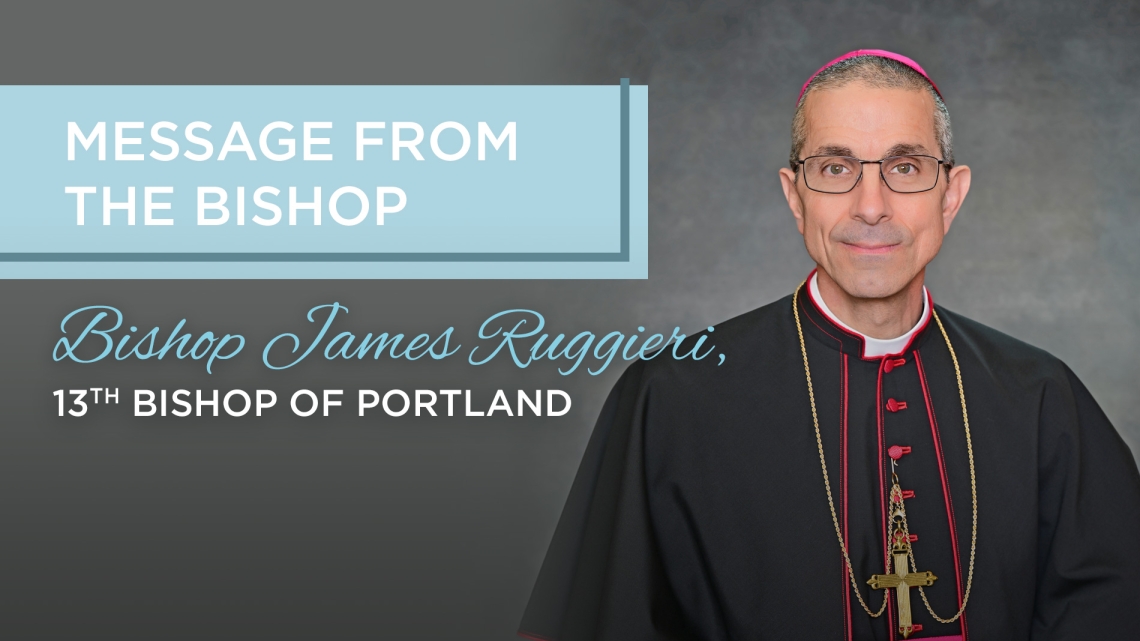A Message from Bishop Ruggieri: Praying for Peace

On Monday, October 7, 2023, Hamas militants stormed the border area between Gaza and Israel and other Israeli towns in a surprise attack that resulted in the death of 1,200 Israelis and the taking of 250 hostages. In the fighting between Israel and Hamas that has ensued since the October 7 attacks, over 40,000 Palestinians have died. Now Israel is engaging with the Iranian backed Hezbollah, a designated terrorist group by the United States and the European Union, in the north with missiles and ground fighting. The escalation of the fighting in the Middle East is dangerous and frightening. In response, last week during the opening of the Synod on Synodality, Pope Francis called for a day of prayer and fasting for peace on Monday, October 7, the one-year anniversary of the Hamas attacks.
As I read and hear about the ongoing and escalating conflict in the Middle East between Israel, Hamas, and now Hezbollah, I often feel quite helpless. Pope Francis gives us the opportunity to do something: pray and fast. Prayer and fasting are two ancient ways that people of faith can be proactive in response to situations and circumstances which are beyond their control.
Praying for peace can involve visiting a church, chapel, or shrine. Prayer, of course, can also be done right where we are at. It is helpful to be able to spend time with our Lord in the Blessed Sacrament. Praying in front of the tabernacle or in the presence of the Blessed Sacrament exposed can help us to focus our attention on Jesus before us as we spend the time in prayer.
Praying with the Scriptures is also helpful. If we are intentional about praying for peace, the following passages of Scripture may lead our meditation: Matthew, Chapter 5; Luke, Chapter 6; and John, Chapters 14 through 17. Also, it may be helpful to read one of the passion narratives found in the four gospels. Reading and meditating on the Passion of Jesus is a helpful reminder that Jesus, through his cross and resurrection, has conquered sin and death. He is our peace. He has made peace with the Father for us by offering his body on the altar of the cross.
Praying with Mary is another option. Mary, in her litany, has been given the title of Queen of Peace. It is always beneficial to include Mary in our prayers. She is a great intercessor. The Rosary is a very proven and beneficial way to guide and lead our prayer as we reflect on the life of Jesus with Mary in meditating on the various mysteries of the Rosary.
In addition to prayer, the pope has asked us to fast for peace. Fasting usually involves eating less or being more disciplined about how we eat. Fasting my mean skipping a meal, not eating in between meals, or giving up our favorite snacks for the day. If we are going to consider a fast of bread and water or giving up food entirely for the day, it is important to ensure that our health can tolerate such a fast. Fasting may also include social media, video games, television, or other daily activities of diversion that we engage in on a regular basis. We may choose to fast from one or more of those activities while offering an intention such as peace in the Holy Land for the reason behind the fast. The intention for the fast is important to keep in our hearts as we undertake the fast.
Overall, we have the option to participate with our Holy Father Francis and many others throughout the world and actively pray and fast for peace in the Holy Land. In our prayers, let us commend the hearts of those leaders who can actually be the agents of peace. May God move their hearts to end the violence. So many innocent people have suffered and are suffering in Israel, Gaza, and now Lebanon. May the suffering end. May peace reign again in the Middle East.









